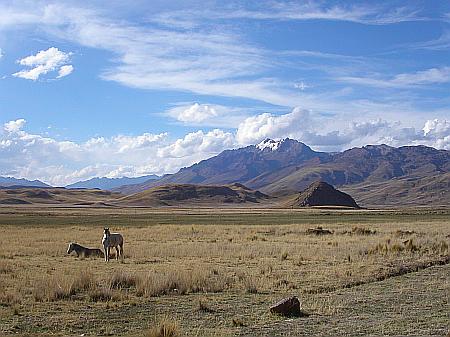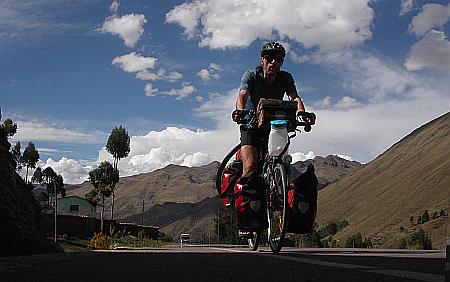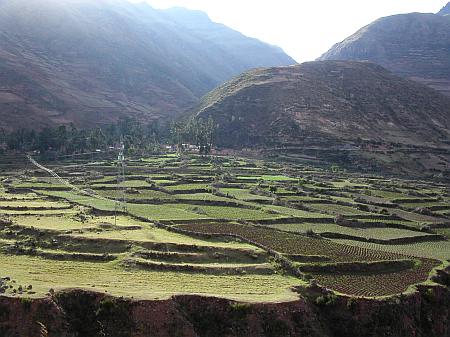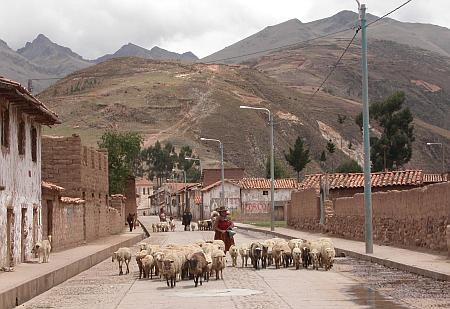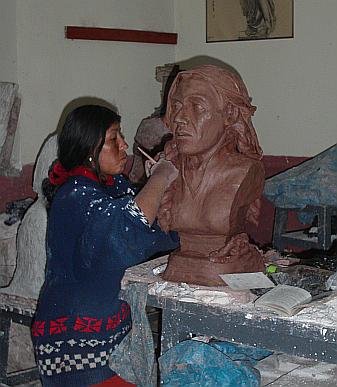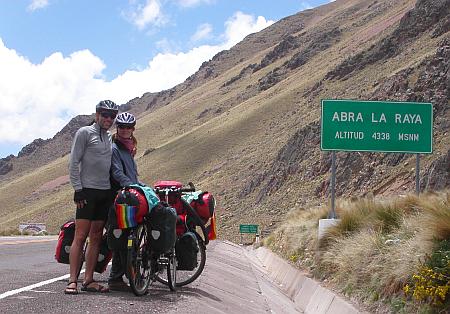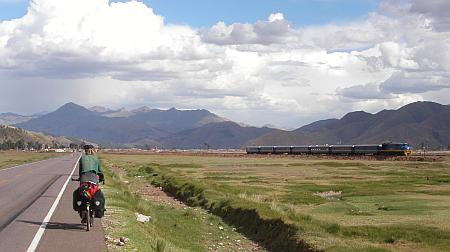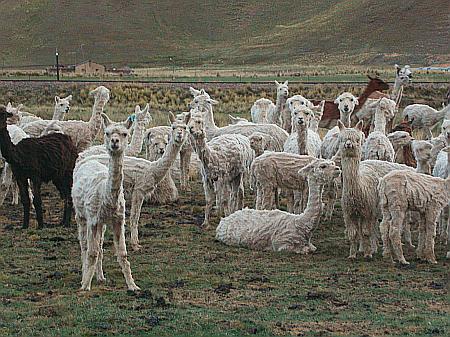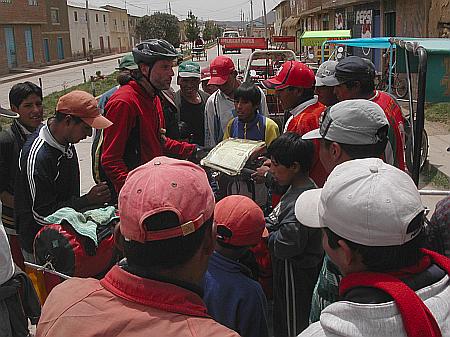|
By chance, we discovered the art college of
Checacupe and immediately, we were invited
to a two-day leadership through school and
village (see also at "Who we met").
At the "Escuela Superior Autonoma-Bellas
Artes-Diego Quispe Tito"
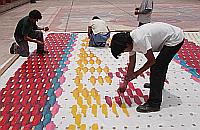 is taught drawing,
wall painting, sculpturing, ceramics, dance,
music and theater. Left in the picture you
can see the manufacturing of a theater scenery.
After all the souvenir trash we saw in Cusco,
it was a relief to see the excellent work of
this master students. The director and the
faculty dedicated big engagement to the
conservation of the traditional culture of
this region. And they clever include modern
technologies and tendencies. A very interesting
and support-worthy project with which the
poverty is fought in this region! Mila likes
to arrange contact to people, who are interested. (mi, mi)
is taught drawing,
wall painting, sculpturing, ceramics, dance,
music and theater. Left in the picture you
can see the manufacturing of a theater scenery.
After all the souvenir trash we saw in Cusco,
it was a relief to see the excellent work of
this master students. The director and the
faculty dedicated big engagement to the
conservation of the traditional culture of
this region. And they clever include modern
technologies and tendencies. A very interesting
and support-worthy project with which the
poverty is fought in this region! Mila likes
to arrange contact to people, who are interested. (mi, mi)
|
